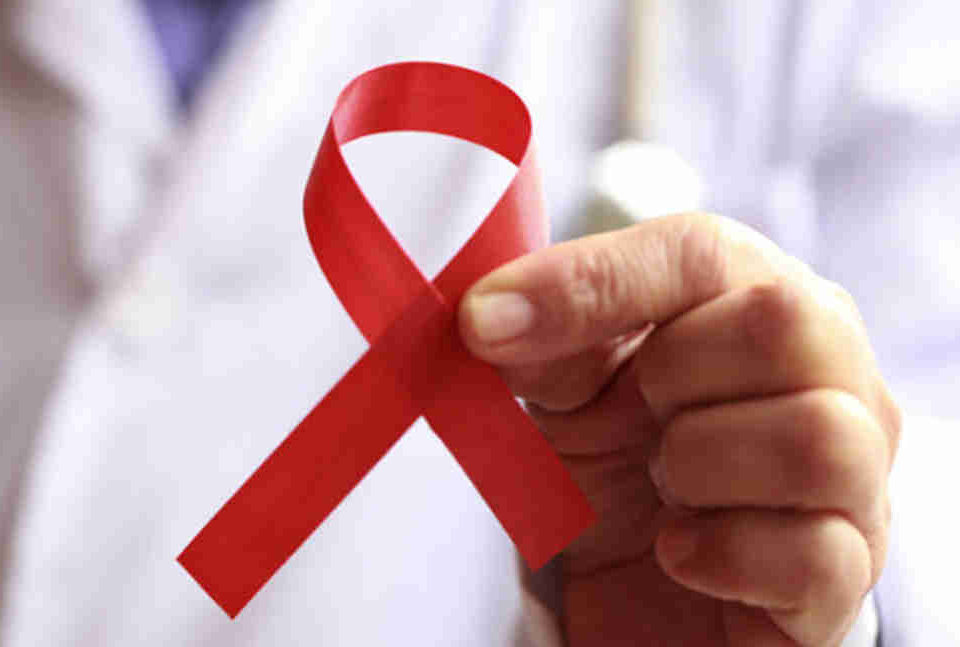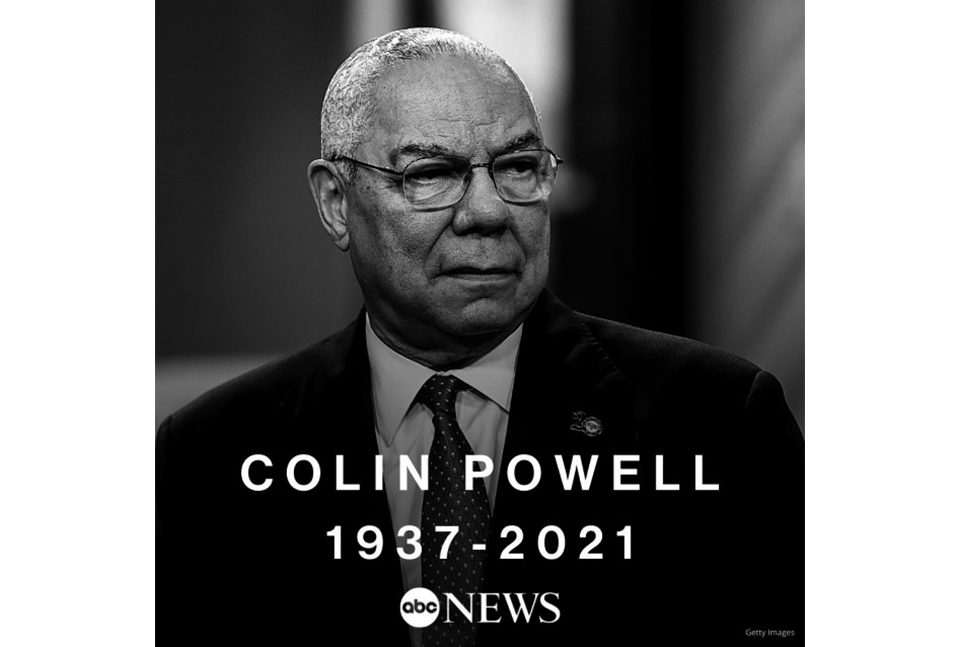- 如有疑问,请联系电邮
- customer@ihealth66.com
USNEWS:女性如何来降低肺癌死亡的风险?

USNEWS:关于肺癌你不知道的7件事
2019年4月9日
USNEWS:睡眠和肺癌之间有联系吗-褪黑素真有大作用!
2019年4月11日By Elaine K. Howley
我们都知道两性在解剖学上有根本的不同。就像他们说的,与众不同。但在疾病和条件中,有时也会出现其他生理上的差异,而你可能并不期望看到这些差异。其中一个差异出现在女性和肺癌中。
长期以来,肺癌被认为是一种“男性疾病”,而今天,死于肺癌的男性平均仍多于女性。但是女性已经赶上了男性,其中一些与肺癌有关的性别差异可以归因于吸烟模式和习惯。俄亥俄州克利夫兰诊所(Cleveland Clinic)的肺科医生Humberto K. Choi说,女性吸烟率在男性吸烟率稳定很久之后,一直持续上升到20世纪60年代。这意味着女性肺癌的发病率和死亡率在男性趋于平稳后继续上升。“例如,男性肺癌死亡率在70年代趋于稳定,而女性仅在90年代才趋于稳定,”Choi说。
尽管吸烟是导致肺癌的主要风险因素——在所有的男性和女性肺癌病例中,吸烟都占80%到90%,Choi说——肺癌可以而且确实发生在没有吸烟史的人身上。但根据美国卫生与公众服务部(Department of Health & Human Services)妇女健康办公室(Office on Women’s Health)的数据,这是一个不公平的领域:“五分之一被诊断患有肺癌的女性从未吸烟。”相比之下,从不吸烟的男性中有十分之一的人患肺癌。
女性,尤其是不吸烟的年轻女性,似乎确实比男性更容易患肺癌,但究竟是什么原因仍然是个谜,尽管对这一领域进行了深入的研究,从激素、遗传学到环境暴露和生活方式因素,无所不有。
Choi说,原因之一是普通女性从普通香烟中接触致癌物质的程度。在一种单一品牌的香烟中,无论谁在吸烟,每种香烟都含有相同数量的毒素。男性的平均体型比女性大,因此他们的肺也更大。因此,女性吸烟时每根香烟中的毒素可能更集中在一些女性的肺部,这可能导致肺癌更快发展的几率更高。
此外,“与不吸烟的男性相比,不吸烟的女性患肺癌的比例更高。大约20%的肺癌女性从不吸烟,”崔说,大约是不吸烟男性的两倍。世界卫生组织报告说,妇女更容易罹患非小细胞肺癌,这是最常见的肺癌,约占所有病例的85%。这种情况在不吸烟者中更为普遍。
没有人确切地知道为什么不吸烟的女性似乎比不吸烟的男性更容易患肺癌,但是“提出的解释包括环境暴露的差异、基因差异、激素差异和分子异常,”Choi说。
纽约长老会/哥伦比亚大学医学中心(New York-Presbyterian/Columbia University Medical Center)女性肺与健康中心(Women’s Lung and Health Center)主任、胸外科医生布莱恩·斯坦尼弗(Bryan Stanifer)博士正在研究女性患肺癌的风险似乎与男性不同的原因。他说,搞清楚这一点是“我在哥伦比亚大学的全部使命”,也是他创办女性肺部健康中心的原因。
他说:“为了说明一些数字,当你谈到肺癌时,有小细胞肺癌和非小细胞肺癌。85%的肺癌是非小细胞肺癌,包括腺癌和鳞状细胞癌。当你观察这个群体时,85%的病例发生在吸烟者身上。这些患者中有将近一半是女性,15%发生在非吸烟者身上。其中三分之二的非吸烟案例是女性,没有人知道原因。如果你说的是所有癌症患者中男性占55%,女性占45%,确诊时的平均年龄是70岁。但如果你开始观察不吸烟者和年龄小于60岁的患者,你会发现大多数是女性。”
然而,原因尚不清楚。“有很多理论,但从来没有得到充分的研究,这是我们在这里的使命的一部分。这些理论包括一切,是否有荷尔蒙成分?是否有一些特定的环境接触是女性接触到的而男性一般不会接触到那么多?但最终的答案是,目前没有人知道。我们目前还不能完全理解为什么越来越多的年轻、不吸烟的女性患上肺癌。我们正在积极开展更多的研究来帮助这些患者。”
正如斯坦尼费尔所指出的,激素可能发挥了作用。雌激素可在某些肺癌中表达。2017年发表在《国际分子科学杂志》(International Journal of Molecular Sciences)上的一项综述研究报告称,尽管雌激素在女性性发育、生殖和乳腺癌中的作用早已为人所知,但这种在卵巢中合成的激素似乎对身体也有其他影响。但越来越多的研究人员正在研究雌激素是否有时也与肺癌的发生有关。“雌激素受体一直存在于肺癌组织和细胞系中,尤其是腺癌,”该研究指出,腺癌是女性更容易患肺癌的一种形式。雌激素也“被报道对肺癌患者的预后有负面影响,然而,关于雌激素对肺癌风险和/或生存率的影响,有一些研究结果相互矛盾。”换句话说,雌激素和肺癌之间很可能存在联系,但确切地确定雌激素和肺癌之间的联系是如何存在的以及为什么会存在,还有待阐明。
肺癌的治疗方法在本质上对男女都是一样的,但因患者的总体健康状况、癌症的分期、类型和偏好不同而有所不同。“性别并不一定决定治疗,”崔说。“然而,那些从不吸烟但患有肺癌的患者往往有特定类型的基因突变,有助于选择特定的治疗方法。”当一个人被诊断出患有晚期疾病时尤其如此。例如,患有EML4-ALK异常的晚期肺癌患者可以使用一种名为crizotinib的药物进行治疗。
为了降低患肺癌的几率,首先,不要吸烟。如果你吸烟,请试着戒烟。“因为肺癌与吸烟联系如此紧密,而且女性似乎更容易受到吸烟的有毒影响,所以最好的建议就是永远不要吸烟,”崔说。“当有人已经在吸烟时,他们应该戒烟。即使是那些低水平的吸烟,有人可能认为是健康的,也可能是有害的。”
斯坦尼弗对此表示赞同,他说:“降低肺癌风险的第一步是戒烟。这是迄今为止最大的可控风险因素。避免二手烟也会有所帮助。”
戒烟很难,但它是可以做到的,这是你能做的最大的改变,以减少你患肺癌的机会,提高你的生存机会,如果你有肺癌。吸烟是你能直接控制的减少患肺癌几率的几个因素之一。2018年5月发表在《美国国家癌症研究所杂志》(Journal of the National Cancer Institute)上的一项研究发现,在戒烟后的五年内,之前重度吸烟者患肺癌的风险下降了39.1%。戒烟后,患肺癌的风险逐年下降。
如果你不能或不愿戒烟,“一些研究表明,服用-胡萝卜素补充剂会增加患肺癌的风险,因此应该避免,”斯坦尼弗说。所以,和你的医生谈谈你服用的任何补充剂或药物,以确保你不会在不经意间增加你的风险。
斯坦尼弗说,你还应该努力减少已经被证明会增加癌症风险的环境因素。“应避免接触氡和石棉。氡可集中于室内。有一些自己动手的工具包可以检测家中的氡水平,你可以考虑使用这些工具包,以确保你不会受到过高的辐射。”
你也应该和你的医生谈谈你可能正在服用的激素疗法。一些研究表明激素替代疗法与肺癌的不良预后之间存在相关性。两者之间的联系尚不清楚,但似乎在某些情况下,激素替代疗法可能会增强吸烟的影响,这意味着吸烟和使用激素替代疗法的女性死亡率更高。
如果你是或曾经吸烟,或有更高的肺癌风险,考虑每年进行一次筛查。肺癌的筛查采用低剂量CT扫描。史上规模最大的癌症预防试验之一,国家肺筛查试验,显示了肺癌的特异性和总体死亡率的优势,报名参加一个筛查项目的资格,”斯坦尼费尔说。他说:“保险范围和具体标准各不相同,但一般来说,年龄在55岁至80岁之间的所有吸烟者或前吸烟者都应该看看自己是否符合条件。”
肺癌筛查有利有弊——在开始筛查方案之前,一定要与医生详细讨论风险和益处。尽管存在潜在的危害,但在肺癌成为难以治疗的问题之前,筛查目前是早期发现肺癌的最佳方法。癌症发现得越早,你死于癌症的可能性就越小。美国肺脏协会报告说,肺癌的总体五年生存率为18.6%,但在早期的局部诊断阶段,存活率提高到55%。
除了这些策略之外,重要的是正确的饮食,有规律的锻炼,控制体重,如果你出现咳嗽,或者其他呼吸系统问题没有好转或复发,去看医生。肥胖和久坐不动的生活方式会增加患各种癌症的风险,所以为了你的整体健康,保持运动和均衡饮食很重要。
WE ALL KNOW THAT THERE are fundamental differences in anatomy between the sexes. As they say, vive la différence. But there are other physiological differences that sometimes show up in diseases and conditions, where you might not expect to see them. One such difference arises in women and lung cancer.
Lung cancer was long thought of as a “man’s disease,” and today, more men still die of the condition than women on average. But women have been catching up to men, and some of these sex-related differences in lung cancer can be attributed to smoking patterns and habits. The rate of smoking among women continued to rise into the 1960s among women well after it had stabilized for men, says Dr. Humberto K. Choi, a pulmonologist at the Cleveland Clinic in Ohio. That means the rate of incidence of lung cancer and its mortality rates continued to rise for women after it had leveled off for men. “For example, lung cancer mortality stabilized in the ’70s among men while it stabilized only in the ’90s for women,” Choi says.
Although smoking is the leading risk factor for lung cancer – it’s responsible for 80 to 90 percent of all cases of lung cancer in both sexes, Choi says – lung cancer can and does occur in people who have no smoking history. But according to the U.S. Department of Health & Human Services’ Office on Women’s Health, that’s an area of inequity: “1 in 5 women diagnosed with lung cancer have never smoked.” That’s compared to 1 in 10 cases of lung cancer in male never-smokers.
Women, particularly younger nonsmoking women, do seem to be somewhat more likely to develop lung cancer than men, but why exactly is still mostly a mystery, despite intensive research into this area looking at everything from hormones and genetics to environmental exposures and lifestyle factors.
One reason is the level of exposure the average woman gets to carcinogens from the average cigarette, Choi says. Within a single brand of cigarette, each contains the same amount of toxins regardless of who’s smoking it. Men, on average, are larger than women, and thus have larger lungs. Therefore, the toxins from each cigarette a woman smokes may be more concentrated in some women’s lungs, which could lead to a higher chance of quicker development of lung cancer.
What’s more, “the proportion of lung cancer cases in non-smoking women is higher compared with non-smoking men. Approximately 20 percent of women with lung cancer never smoked,” roughly double the percentage of non-smoking men, Choi says. The OWH reports that women are more likely to develop non-small cell lung cancer, the most common form of lung cancer that accounts for about 85 percent of all cases. It’s more prevalent among non-smokers.
No one is exactly sure why non-smoking women seem more likely to develop lung cancer than male never-smokers, but “proposed explanations include differences in environmental exposures, genetic differences, hormonal differences and molecular abnormalities,” Choi says.
Dr. Bryan Stanifer, a thoracic surgeon and director of the Women’s Lung and Health Center at New York-Presbyterian/Columbia University Medical Center, is studying the reasons women seem to have a different risk profile for lung cancer than men. He says figuring that out is “my whole mission here at Columbia,” and the reason he started the Women’s Lung and Health Center.
“Just to put some numbers on some of this, when you talk about lung cancer, there’s small cell and non-small cell lung cancer. Eighty-five percent of lung cancer is non-small cell, which includes adenocarcinoma and squamous cell carcinoma. When you look at that group, the majority – 85 percent – of cases occur in smokers. Just under half of those [patients] are women, and then 15 percent [of cases] occur in nonsmokers. Two-thirds of those [nonsmoking cases] are women, and nobody knows why. If you’re talking about lung cancer overall in all comers it’s about 55 percent male, 45 percent female, and the median age at diagnosis is 70. But if you start looking at nonsmokers and the patients who are less than 60 years old, it’s a majority women.”
Why, however, is not clear. “There’s lots of theories, but it’s never been adequately studied, which is part of our mission here. The theories include everything from, is there a hormonal component? Is there some specific environmental exposure that women get that men that on average tend not to get as much? But the ultimate answer is that no one knows right now. We currently do not fully understand why more young, non-smoking women are getting lung cancer. More research is actively being undertaken to help these patients in the future.”
As Stanifer noted, hormones may play a role. Estrogen can be expressed in some forms of lung cancer. A 2017 review study in the International Journal of Molecular Sciences reported that while estrogen’s role in female sexual development, reproduction and breast cancer has long been understood, this hormone that is synthesized in the ovaries appears to have other effects in the body, too. But increasingly, researchers are investigating whether estrogen can also sometimes be implicated in the development of lung cancer. “Estrogen receptors are consistently found in lung cancer tissues and cell lines, especially adenocarcinoma,” which is a form of lung cancer that women are more likely to get, the study noted. Estrogen has also “been reported to adversely affect the prognosis of lung cancer patients, however, there are several studies with conflicting results about the effect of estrogen on the risk and/or survival of lung cancer.” In other words, there may well be a connection between estrogen and lung cancer, but determining exactly how and why that connection exists has yet to be clarified.
Treatment for lung cancer is essentially the same for both sexes, but varies from patient to patient depending on the individual’s overall health, stageand type of cancer and preferences. “The gender doesn’t necessarily dictate the treatment,” Choi says. “However, those patients who never smoked but developed lung cancer tend to have certain types of genetic mutations that help choose a specific therapy. This is especially true when someone is diagnosed at an advanced disease stage. For example, patients with advanced lung cancer with an abnormality called EML4-ALK can be treated with a medication called crizotinib,” which goes by the brand name Xalkori.
To reduce your chances of developing lung cancer, first and foremost, don’t take up smoking. And if you do smoke, please try to quit. “Because lung cancer is so tightly associated with smoking, and because women seem to be more susceptible to the toxic effects of smoking, the best piece of advice is to never smoke,” Choi says. “And when someone is already smoking, they should quit. Even those low levels of smoking that someone may think is healthy can be harmful.”
Stanifer agrees, saying “the first step to reducing lung cancer risk is to stop smoking. This is by the far the biggest controllable risk factor. Avoiding secondhand smoke will also help.”
Quitting is hard, but it can be done, and it’s the biggest change you can make to reduce your chances of developing lung cancer and improve your chances of survival if you have lung cancer. Smoking is one of the few factors you have direct control over to reduce your chances of developing lung cancer. A May 2018 study in the Journal of the National Cancer Institute found that within five years of quitting smoking, the risk of developing lung cancer had declined 39.1 percent for previously heavy smokers. The risk of developing lung cancer continued to decline with each additional year after quitting.
If you can’t or won’t stop smoking, “there is the suggestion in some studies that taking beta carotene supplements can elevate lung cancer risk and should therefore be avoided,” Stanifer says. So talk to your doctor about any supplements or medications you take to make sure you’re not inadvertently increasing your risk.
Stanifer says you should also try to reduce environmental factors that have been shown to increase cancer risk, too. “Exposure to both radon and asbestos should be avoided. Radon can concentrate indoors. There are do-it-yourself kits to check your radon levels in your home that you can consider getting to make sure you aren’t getting elevated exposures.”
You should also talk to your doctor about any hormone therapies you may be taking. Some studies have shown a correlation between hormone replacement therapies and worse outcomes from lung cancer. The connection isn’t clear, but it seems that in some cases, HRT might augment the effects of cigarette smoking, meaning a higher mortality for women who both smoke and use HRT.
If you are or were a smoker or otherwise have an elevated risk of lung cancer, consider annual screening. Screening for lung cancer is done with low-dose CT scanning. “One of the largest ever cancer prevention trials, the National Lung Screening Trial, showed both a lung cancer specific and overall mortality advantage to enrolling in a screening program for those who qualify,” Stanifer says. “Insurance coverage and the specific criteria vary, but generally, all smokers or former smokers between the ages of 55 and 80 should look to see if they are eligible,” he says.
Screening for lung cancer has pros and cons – be sure to discuss the risks and benefits thoroughly with your doctor before you begin a screening protocol. Despite its potential harms, screening is currently the best way to detect lung cancer early, before it becomes a harder-to-treat problem. The earlier a cancer is detected, the less likely you are to die from it. The American Lung Association reports that the overall five-year survival rate for lung cancer is 18.6 percent, but improves to 55 percent for cases diagnosed in an early, local stage.
In addition to these strategies, it’s important to eat right, exercise regularly, keep your weight in check and visit your doctor if you develop a cough that won’t go away or other respiratory issues that don’t improve or return. Obesity and a sedentary lifestyle have been linked to increased risk for a variety of cancers, so for your overall health, it’s important to keep moving and eat a balanced diet.





